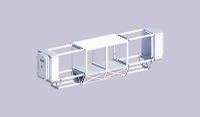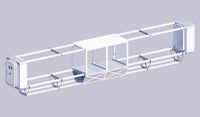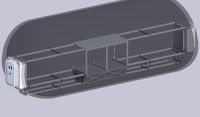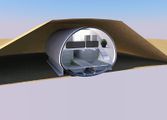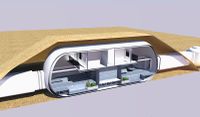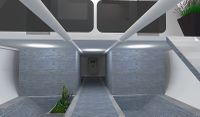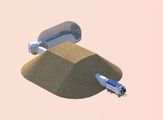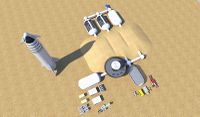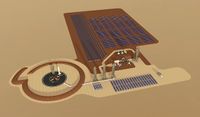Inflatable habitat
|
v · d · eSettlement Types | ||||
|---|---|---|---|---|
Surface habitats could be inflatable like NASA's transhab project. The modules would be unfolded, inflated, connected together and covered with regolith. The insides of the habitats would then be outfitted.
Benefits
Inflatable habitats offer the most benefit to initial settlements and outposts which require buildings shipped from Earth. They offer greater space than rigid habitats of the same initial volume.
An Earth atmosphere pressurised inflatable habitat has an internal pressure of 10 tonnes per m2. Density of regolith is about 1500 kg/m3, this corresponds to 525 kg of soil pressure per m2 at Mars gravity. So the habitat can support up to 19m of regolith. Studies have shown than a single meter of regolith may be sufficient for radiation protection for both solar storms and GCRs.[1]. So an inflatable habitat may well be buried for radiation protection.
Example
A simple inflatable habitat for a Martian settlement. The structure is extended then the volume is inflated. Once the module is stable, it can be buried under regolith for radiation protection.
| Concepts: | Greenhouse · Settlements · Locations · General |
| Hazards: | Space Weather · Climate · General |
| Technology: | Hi-Tech · Lo-Tech · Energy · Spaceflight science · Communication · General |
| Human Considerations: | Economics · Health · Governance · Trade · Law · Social |
References
- ↑ Regolth radiation protection- https://eps.utk.edu/faculty/taylor/Miller-radiation%20measurement.pdf

